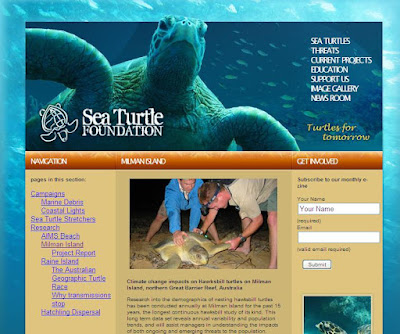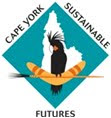Milman Island, situated off Cape York in the northern Great Barrier Reef, is one of the world's most important hawksbill sea turtle rookeries (Photo: GBRMPA)
In 2010, Cape York Sustainable Futures has teamed up with the
Sea Turtle Foundation and
Queensland Parks and Wildlife Service for the Milman Island Hawksbill Turtle Research Project. We have been busily assisting in organising logistics and gear for this important conservation project. The first research team left yesterday and are now on their way north to the top of the Great Barrier Reef on the cargo ship 'Trinity Bay' and will land on the island in 2 days. They will be joined by project staff in 2 weeks time.
Research into the nesting demographics of hawksbills has been occurring annually on the island for the past 15 years. This is the longest running study of its kind. Hawksbill turtles are listed as 'Critically Endangered' under the IUCN. In 2010 the team will further the understanding of the impacts of climate change on the island.
In addition, Traditional Owners and Injinoo Rangers will be assisting with the study and will be provided with training in sea turtle biology and assessment. Additionally, Torres Strait Islander students from Thursday Island will also be involved in the monitoring of the turtles.

Students from Thursday Island in the Torres Strait, and an Earthwatch volunteer from South Africa, collect data from a nesting hawksbill turtle on Milman Island in 2005 (Photo: Brett Leis)












